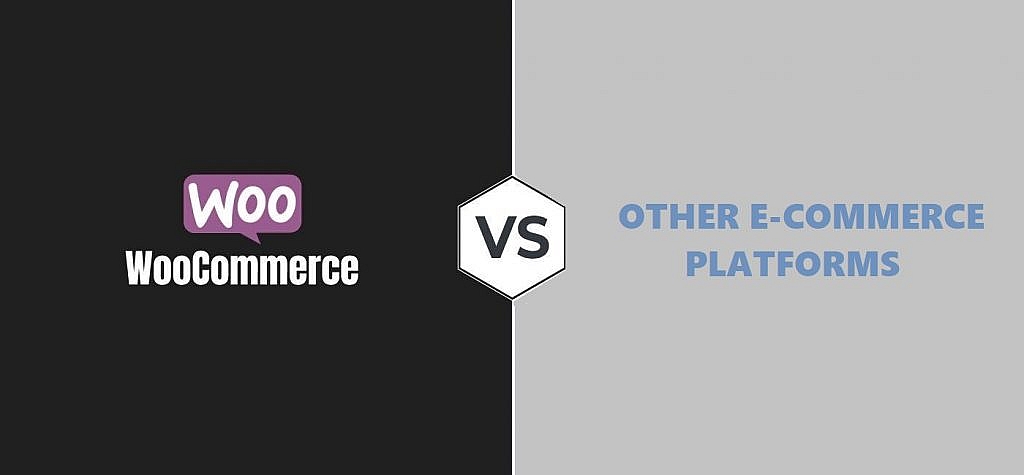You can scale up, increase sales, and market your business easily with the help of an online store. An online store adds convenience to your business and allows you to cater to a wider range or internationally. One of the initial steps of going online requires you to find an eCommerce platform where you can design your website and make a shopping cart solution for your customers.
There is a wide range of platforms available to help you out, but the most popular among them is WooCommerce. Now, you just heard about WooCommerce and don’t know where to begin? WooCommerce can be a tricky platform to understand for beginners and non-developers alike. Thus, a complete WooCommerce guide is required for beginners to walk through the process of setting up.
In this beginner’s guide, we will tell you how to install, activate, and set up different features on your online website. Let’s get started!
Explaining WooCommerce
WooCommerce is an open-source plugin for WordPress. It is a self-hosted platform packed with many features to get you started. WooCommerce was founded in 2008 by WooThemes. It is designed to convert WordPress sites into eCommerce stores.
It consists of unlimited plugins, extensions, and themes, available for free and paid. As it is an open-source platform, it is compatible with third-party apps as well. It is a fully customizable and flexible platform that enables you to make changes easily.
Although a steep learning curve might be felt, it is still one of the easiest eCommerce platforms to work with. It is suitable for all sizes of businesses. With WooCommerce, you can sell anything, from physical products, services, to tutorials.
WooCommerce is the perfect choice for online stores that work with content, products, and needs to be updated regularly. It is favored by developers and owners, and we are going to tell you why in our complete WooCommerce guide for beginners.
Here are the Best Managed WooCommerce Hosting Providers. Choose the one that suits you.
WooCommerce Installation And Activation

Before installing WooCommerce, you need to buy a hosting service and a domain. Most hosting providers, such as Bluehost, offer domains for free. Once that is done, you need to install WooCommerce by going into the WordPress admin directory, then go to plugins – add new, then click on the “install now” button next to WooCommerce. This method is for users who already own a WordPress site. For those who are starting from scratch, you need to first install WordPress from a hosting service or their official website.
After installing WooCommerce, you need to activate the plugin by clicking on the button “Activate”. Once activated, new features, along with WooCommerce, are added into your admin dashboard. These features include menu items for products, widgets, shortcodes, and user accounts.
Once activation is completed, you will be directed to the WooCommerce Setup Wizard. This helps you in the complete configuration of your WooCommerce website and is the next step in our beginners’ WooCommerce tutorial.
WooCommerce Configuration
Getting started with WooCommerce becomes immensely easy with the help of the Setup Wizard. This acts as a Store Profiler and collects information regarding your store to provide better options for your online business.
The initial questions include where your store is based? Where is it located? What types of products will be showcased? Once all these are answered, you can get on with setting up essential shopping cart features.
Next, you can create pages of “My Account” and “Checkout”, add currencies and measurements, including shipping taxes and payment gateways from the available options, such as PayPal and Stripe. There are 100+ more options, free and premium, for payment gateways. And this is it! You are all set up. Now, when you go to the WordPress admin dashboard, you will get statistical analysis and reports regarding sales, stock, and orders. All of these settings can be easily changed later by going to WooCommerce, then settings.
Add Products To Your Store

The next step in the WooCommerce guide for beginners is to add products. We are going to discuss the manual method of adding products. Simply, go to the WordPress admin dashboard, you will find a new tab named “Products”. Go to Products, then click on “add new”. Once you add a product, you need to set the title and description of the product.
Product parameters are divided into general, inventory, shipping, linked products, attributes, and advanced. You can also add further product information. Such as the type of product, its cost, the shipping, and delivery method. You can also categorize the products to make it easier for your customers to browse. You can link related products as well. You can showcase your products by their attributes as well such as color, size, category, group, class, etc.
The finishing touches involve adding a picture, showing its variation, and writing a detailed description. Once all your products are uploaded, just click on publish.
Choose the Best Suitable Theme / Design
With everyone selling similar products, it’s hard to make an impression. How your store looks can really affect the sales of your product. A great storefront is sure to capture your customers’ attention and make you stand out.
Luckily, WooCommerce is equipped with thousands of themes that are designed specifically for it. Additionally, WooCommerce is also compatible with WordPress and third-party themes. This means you have unlimited options in regards to design and can elevate your customers’ shopping experience.
WooCommerce’s official theme is called Storefront, which is available for free. It also has 14 child themes that are suitable for selling anything such as medicines, hotel reservations, clothes, cosmetics, and much more. Other amazing themes include Ultra, Astra, Neto, Deli, etc.
WooCommerce guide to themes includes choosing a theme that is simple, unique, mobile responsive, and compatible with WooCommerce. With WooCommerce, you can also customize the themes if you have basic coding experience.
Searching for the Best WooCommerce Themes for your store? We got you covered with our compilation of the
Best Themes for WooCommerce.
Plugins Installation

The WooCommerce theme installation tutorial is fairly simple. WooCommerce Guide For Beginners will tell you how. All you have to do is go to the WordPress admin dashboard, then go to plugins, add new, and select from a wide variety of options available.
WooCommerce relies heavily on plugins and extensions to add advanced features on your business website. You can find many free and paid extensions and plugins in the WordPress and WooCommerce directories. WooCommerce also enables you to customize the plugins however you like.
Some of the essential WooCommerce extensions that you need to set up include payment gateways, shipping methods, tax calculators, booking, subscriptions, etc. These extensions help in creating a shopping cart for your customers.
With the help of plugins, you can add functionality to your website and make it user-friendly. Some of the best WooCommerce plugins include YITH WooCommerce wishlist, TrustPusle, Constant Contact, Live chat, cart recovery, and many other unlimited plugins. These plugins add convenience and accessibility for your customers.
We have compiled the Best WooCommerce Plugins that can help you elevate your store’s performance and sales.
Comparison With Other Platforms

Why is WooCommerce considered the best eCommerce platform? There are many reasons why WooCommerce stands out from its competitors. It is a free and open-source platform for WordPress, thus developers from all over the world are contributing to making it the best and easiest platform to work with.
WooCommerce is also a fully customizable platform and allows you to make changes as you go. Its scalability is off the charts and it is suitable for all sizes of businesses. WooCommerce offers unlimited choices in themes, plugins, and extensions, unlike any other eCommerce platform. WooCommerce also has the largest online community forum with experts available and is unparalleled in service and performance.
WooCommerce is known for beating some of the most well-known eCommerce platforms available in the industry, some of them being older than WooCommerce.
To conclude, we have written detailed comparisons between WooCommerce and other popular eCommerce platforms to make you believe why WooCommere is the best of them all.
Check out these comparisons:
1. Shopify vs WooCommerce
2. Magento vs WooCommerce
3. BigCommerce vs WooCommerce
4. nopCommerce vs WooCommerce
5. OpenCart vs WooCommerce
6. PrestaShop vs WooCommerce
How To Grow Your Online Store WooCommerce?

In this WooCommerce guide for beginners, we are also going to include various ways you can increase sales, traffic, and overall grow your online business with the help of WooCommerce features.
1. E-mail Marketing
Email marketing is the best way to promote your business and increase sales. WooCommerce has many plugins associated with email marketing, such as MailChimp, OptinMonster, WP Subscriber, Newsletter, and much more. All of these plugins help in devising the perfect strategy to market your business at the right time to the right customers.
With the help of these plugins, you can send an automated welcome, order confirmation, transaction, and tracking emails to your customers. You can also increase subscribers and offer them special discounts and coupons to increase sales. Moreover, You can segment your customers and send them emails regarding items based on their purchase history.
Email marketing is a great way to stay connected with your customers and build a relationship with them.
Check out the Best Marketing Plugins To Elevate Your Sales.
2. Abandoned Cart Recovery
One of the most popular eCommerce features includes abandoned cart recovery. This feature is also a customers’ favorite as more than 70% of customers leave their cart without completing the checkout process. This could be due to many reasons including slow page loads, shipping charges, account subscription, long processing time, etc.
Thus, with the help of this feature, your customers can retain their shopping carts and complete the process whenever they want to. This saves them from the hassle of browsing again. The WooCommerce abandoned cart recovery plugin is available for free and sends automated emails to your customers reminding them to complete the checkout process. You can also add coupons to encourage customers.
Other plugins available are Yith abandoned cart recovery, Retainful, CampaignRabbit, etc.
Related Article: Best Abandoned Cart Recovery Plugins For WooCommerce
3. Keep Track of Your Customers’ Interests
The best way to grow your business and keep your clients happy is to build long-lasting relationships with your customers. WooCommerce consists of unlimited plugins and extensions that help in segmenting your customers based on their past purchases, abandoned carts, interests, wish lists, etc. With this feature, you can send your customers personalized emails, along with discounts and coupons, enticing them to make a sale.
This is also a good way to increase sales and traffic on your website. You can find an assortment of plugins from the WordPress and WooCommerce directories to fulfill this purpose.
4. SEO
If you want your online store to rank higher on search engines, then adding WooCommerce SEO plugins is the way to go. SEO plugins help in optimizing your website content. There are many WooCommerce SEO plugins available, among them Yoast SEO is the best. It is available for free and has updated Google algorithms, keyword optimization, internal linking, readability analysis, content management, and much more.
Other SEO plugins available are All in One SEO pack, WP-Backlinks, Jetpack, etc.
Do check out our article on the Best WooCommerce SEO plugins to rank your store higher in search engines.
Conclusion
This WooCommerce guide for beginners is the perfect installation and setup guide for opening an online store. WooCommerce is the ultimate eCommerce platform for WordPress websites. Its performance and speed are unlike others.
WooCommerce real strength lies in its compatibility with unlimited plugins, extensions, and themes from third-party sources. It is the most powerful and customizable platform. It is beneficial for beginners and developers due to its easy operations.
Getting started with WooCommerce might seem difficult, but once you go through this guide, you will be able to conquer this platform easily.



